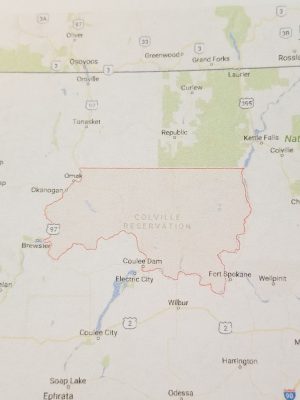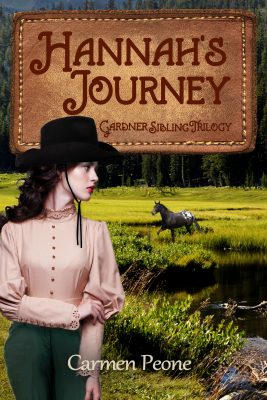The Speckled Fish People
 Hannah’s Journey Book Launch is a month away!
Hannah’s Journey Book Launch is a month away!
Planning is moving from a walk to a trot. A fast, long trot. And you are the first to get all sneak peaks!
The next several posts will deal with food, Native culture, horses and more that appear in Hannah’s Journey.
The Speckled Fish People
Today the Sinyekst or Sinixt culture is the main feature. Also known as the Arrow Lakes or on the rez simply, Lakes. Sinixt refers to the Speckled Fish or Bull Trout people. In my books, I spell Sinixt “Sinyekst” because that is how elder Marguerite Ensminger had taught me, and the books honor her and the old ways (minus serotypes).
I’ve focused on this particular band of the Colville tribes for my young adult books because, if you don’t already know, my husband is a member of the Colville Tribes and this is one of the 12 bands.
The twelve bands, not all of them came onto the reservation at once, include:
Sinixt, Colville, Palus, Moses-Columbia, Nez Perce, Okanogan, San Poil, Entiat, Methow, Nespelem, Wenatchee, and Chelan.
The Colville Confederate reservation was formed in 1872 by executive order under President Ulysses S. Grant. The original boundaries almost tripled the existing 1.8 million acres reservation borders.
The Sinixt originated around the northern tip of the Arrow Lakes in the Canadian Territory and were semi-nomadic. They roamed the land, going back and forth across what is now the 49th parallel that separates Canada from the United States.
Salmon was their main staple. They did little big game hunting but did trap smaller mammals for food. They harvested roots, plants, and berries to mix in with fish.
Camas was another major food in their diet. They cooked the roots in a fire pit on top of heated rocks, sandwiched between plant leaves. They’d then mix the camas with other Native food or made cakes out of them.
Even though women were fine beaders, they were known for their water tight baskets made out of cedar bark and bear grass. Traditionally, the woman wore basket hats for ceremonial purposes.
Native men were fisherman in the true sense, making camp near the Kettle Falls. It was said that in their time, salmon were so thick one could walk on their backs across the Columbia River.
In Hannah’s Journey, Hannah Gardner invests in a lifelong kinship with Spupaleena and her Sinyekst family. After a brawl with an Indian boy who wants nothing to do with Hannah or her horse racing, Running Elk, a Sinyekst boy, comes to her rescue.
Hannah sees this as a way out of her parent’s grasp. The young teen thinks she’s ready for womanhood. But is she?
Short Excerpt:
“Why are you still here?” Wind Chaser said.
He glared at me with coal-colored, wide-set eyes. For a minute I thought he might raise a hand and strike me. I took a couple steps back, hoping I was out of reach. He stole those steps back, coming closer than before. I squinted my eyes and curled my upper lip, taking a moment to gain a speck of control before answering. “Because I’m racing today.” I leaned close and got a whiff of his sweet-venison breath. “Like you.” I stood tall, turned, and walked off.
“You are not as strong a rider as your Sinyekst aunt!” Wind Chaser cackled.
I whisked past him, bumping his shoulder.
Pre-order Hannah’s Journey here!
P.S. You will be the first to get my Facebook launch party invite. For now, you can save the date: Oct. 3 from 5-7 p.m. Pacific Standard Time.
One more thing:
Do you have a fry bread recipe? Here is the one I learned with:
3 cups flour
6 tsp baking powder
3tsp sugar
1 tsp salt
3/4 cup milk
Add warm water as needed to thin out.
Heat oil in a frying pan, enough to cover half the bread, and then prepare the dough.
Knead, dusting with flour as needed. Form a flat cake out of the dough and place in oil.
Fry until the bottom side is golden and crusted, turn.
Eat with honey, butter, or jam.
Have you made fry bread before? What recipe did you use? What is your favorite bread recipe?

 Hannah’s Journey Book Launch is a month away!
Hannah’s Journey Book Launch is a month away!
Interesting that Naïve Peoples knew to harvest roots, berries, and greens to mix with salmon. This diet is balanced and explains why scurvy wasn’t the problem it was for the frontier settlers and pioneers who ate nothing but protein. Sea captains had solved the scurvy problem on ships at sea by carrying barrels of limes (hence “limeys”) but the land-lubbers who had vegetation right under their noses died of a completely unnecessary disease because of ignorance and stubbornness.
Great points, Judith. Even today, people don’t realize the importance of “good” food. Healthy food. We are what we eat and all the processed food out there is causing so much cancer and other health issues and it is due to ignorance and pride. Vegetables are key to good health, fresh organic veggies.
I couldn’t agree more. You’ve said it so well.
This interested me because my husband’s relatives are from the Kettle Falls/Colville area. Grandparents last name Richardson–I’ve been to the site of their homestead, brought home a couple relics, a fender from an old potbellied heating stove, for my West-themed basement. His aunt and uncle, residents of Kettle Falls were Orville and Betty Brown. Much good luck on your book launch!
Irene, thank you for sharing your husband’s family history. How fun we have the area in common. My grandmother lived in Kettle for many years. I’ll ask my mom, who grew up in Colville, if she knows the Browns. You brought home some treasures, how fun. Thank you!
I loved reading this post, Carmen, about the Speckled Fish People, the twelve bands of the Colville tribe and “Hannah’s Journey.” When I read your posts, I know they come from the heart and are authentic with their information. I haven’t made fry bread, but I have made sopaipillas before, a nice little “bread” to eat with chili! P.S. Have you tried using coconut flour and almond meal flour instead of flour for your fry bread?
Thank you, Alice! My posts do come from the heart. I have not heard of sopaipillas before. How fun! I have not tried coconut or almond flour. I used an all-purpose mix with rice flour. I have coconut flour and will try that. Thank you for the tip!
You’re welcome! Sopaipillas is part of the southwestern culture. You’ll have to try them while at WWW in Tucson!
I would love to if they come gluten free.
This is so interesting, Carmen. I loved those details in Hannah’s Journey, too. (Yes, folks, I was honored to be an advanced reader!). I used to bake all our bread and would often save out a portion to make fried bread. Love it!
Thank you, Mary.There is nothing better than homemade bread, or its aroma! Hot butter. Jam. Since I am gluten free, I tried making fry bread….gluten free. I’m still working on that! It was okay, but not the best. I think I need to play with it more this winter.